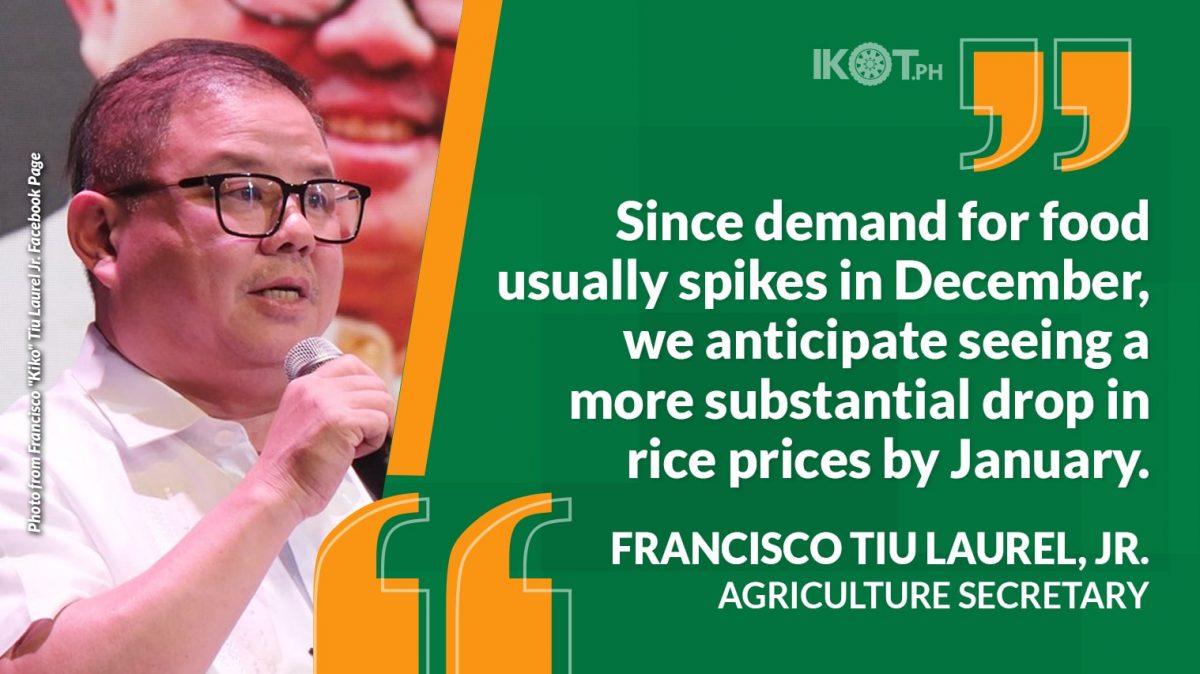Agriculture Secretary Francisco Tiu Laurel, Jr. said that rice prices are projected to start declining in October as a result of the government’s decision to reduce import tariffs.
However, the full impact of the tariff cut may be felt in January 2025, Tiu Laurel added.
President Ferdinand Marcos, Jr. recently signed Executive Order 62, which reduces the tariff on rice to 15 percent from 35 percent, effective July 8.
The move aims to lower the cost of rice, the country’s main food staple that has significantly contributed to high inflation rates due to its substantial weight in the consumer price basket.
Economic managers estimate that the tariff reduction could lead to a decrease of around P5-P7 per kilo of rice.
“But since demand for food usually spikes in December, we anticipate seeing a more substantial drop in rice prices by January,” the agriculture chief said.
“The expected decline in rice prices has not yet fully materialized because traders ramped up rice imports in anticipation of a supply shortage caused by El Niño.”
The agriculture head explained that the expected decline in rice prices has not yet fully materialized because traders ramped up rice imports in anticipation of a supply shortage caused by El Niño.
Between December 2023 to May 2024, rice importation averaged 422,000 metric tons per month, exceeding consumption by 102,000 tons per month. This resulted in an excess of approximately 612,000 metric tons of imported rice at the higher 35 percent tariff, enough to cover nearly two months of consumption.
Ahead of the tariff reduction, rice imports decreased to around 176,000 metric tons per month in June and July.
“It wasn’t until August that we saw a significant increase in import volumes to 385,000 metric tons,” he noted.
In addition to high import tariffs, the soaring global price of rice has pressured traders to purchase palay from local farmers at elevated prices of up to P30 per kilo.
With current palay prices now ranging between P23 and P25 per kilo, a similar reduction in rice prices in the market could be forthcoming.
“Given the wet season, some areas are seeing palay being bought at P16 to P17 per kilo. We need to monitor this closely to ensure farmers are not shortchanged,” Tiu Laurel added.
Global rice prices remain high due to robust demand from Malaysia and Indonesia, which has been exacerbated by Thailand and Vietnam’s attempts to push prices higher.
“Fortunately, Myanmar has reduced their prices, which has somewhat eased the pressure on rice prices.”
“Fortunately, Myanmar has reduced their prices, which has somewhat eased the pressure on rice prices,” he said.
And with India yet to lift restrictions imposed last year on the export of non-basmati white rice, parboiled rice and broken rice, the DA chief said chances of significant reduction in global rice prices is low.
Additionally, freight costs have begun to decline this month after rising by as much as $30 per ton in June and July.
As the situation evolves, the Department of Agriculture continues to monitor market conditions to ensure that the benefits of tariff reduction are fully realized and that both consumers and farmers are fairly treated.



